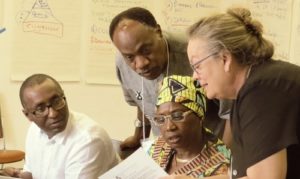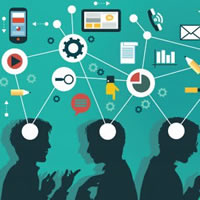Experiential Learning: A Hands-on Approach

![]() Over the next few months, we will be exploring learning as part of a new blog series on LeaderNet. What have we learned about learning over the last 10 years? What types of learning do we encounter most often? Below is the second part of the series on experiential learning.
Over the next few months, we will be exploring learning as part of a new blog series on LeaderNet. What have we learned about learning over the last 10 years? What types of learning do we encounter most often? Below is the second part of the series on experiential learning.
Just over five years ago, the USAID and PEPFAR-funded Grant Management Solutions Project (GMS) set out to reinvent the learning experience for its consultants. From 2007 to 2012, GMS had been conducting consultant orientation workshops, also known as “boot camps.” These workshops involved training delivered using traditional methods (presentations followed by Q&A sessions and experience-sharing, and a few interactive case study exercises). For five very long days. It was exhausting for both participants and trainers!
Then, we realized the situation had changed. It rapidly became apparent that the balance of learning needs had shifted. Although there was still a very real need to ensure that consultants acquired up-to-date knowledge of Global Fund policies, procedures and operational architecture, still greater was the need to fully convey the specifics of what had come to be recognized as “the GMS approach”: solutions-focused expertise applied using a participatory, client-centric approach to addressing complex challenges, both technical and contextual. Obviously, this required a training approach that could encompass both “hard” and “soft” skills in a relatively short time and with maximum learning impact.
How could we accommodate these learning needs in the short time we had with our learners? Experiential learning was our answer. With a foundation in adult learning principles, experiential learning provides an opportunity for in-depth skills development through interactive activities, case studies, problem solving, and discussions. Working together, learners can draw on each other’s knowledge and experience and practice new skills in a safe “test” environment. Methods to facilitate experiential learning include scenario-based training, role-play, guided discovery, hands-on tools application, and group activities.

We developed a week-long scenario-based training in which the consultant learner was thrown into a simulated GMS assignment for 5 days, including work plans, deliverables, role plays, and presentations based on what they would be doing in the field. Learners would often feel a range of emotions throughout the week from “I don’t know what I’m doing!” to “This is crazy!” to “Now I get it!” Although these skills-building workshops were still a lot of work, participants found them exhilarating. Their readiness evaluations showed that, by the end of the workshop, consultants felt ready to take on a GMS assignment with the skills and confidence they needed. Such experiential approaches were then used throughout the project implementation period (2012-2017) in all technical training with great success.
Interested in submitting a guest blog on learning? Click here to learn more.





Responses